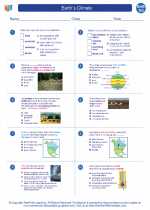Spring Force
Spring force is a type of force exerted by a spring when it is stretched or compressed. It is a restoring force that tends to bring the spring back to its equilibrium position. The magnitude of the spring force is directly proportional to the displacement of the spring from its equilibrium position.
Hooke's Law
Hooke's Law describes the relationship between the spring force and the displacement of the spring. It states that the force exerted by a spring is directly proportional to the displacement of the spring from its equilibrium position. Mathematically, it can be expressed as:
F = -kx
Where: F = spring force k = spring constant x = displacement from the equilibrium position
Spring Constant
The spring constant (k) is a measure of the stiffness of the spring. It is a constant value that depends on the material and the design of the spring. A higher spring constant indicates a stiffer spring, while a lower spring constant indicates a more flexible spring.
Study Guide
Here's a study guide to help you understand the concept of spring force:
- What is spring force?
- Explain Hooke's Law and its mathematical representation.
- How does the spring constant affect the spring force?
- Describe an experiment to determine the spring constant of a spring.
- Discuss the applications of spring force in everyday life.
By understanding the concept of spring force and Hooke's Law, you will be able to solve problems related to the behavior of springs and their applications in various mechanical systems.
Good luck with your studies!
[Spring Force] Related Worksheets and Study Guides:
.◂Earth Science Worksheets and Study Guides High School. Earth`s Climate

 Worksheet/Answer key
Worksheet/Answer key
 Worksheet/Answer key
Worksheet/Answer key
 Vocabulary/Answer key
Vocabulary/Answer key
 Vocabulary/Answer key
Vocabulary/Answer key
 Vocabulary/Answer key
Vocabulary/Answer key
